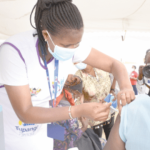The insurance sector in Africa, including Kenya, is experiencing substantial transformation due to evolving consumer demands, technological progress, and demographic shifts. Millennials, born between 1982 and 1994, are particularly influential in driving these changes.
Market research firm IMARC Group projects that the African insurance industry will grow by 6.3% from 2024 to 2032, following a market value of $87.4 billion (Sh11.6 trillion) in 2023.
“Millennials have a big role to play in Africa’s insurance growth as they begin to build families and acquire property,” says Mulenga Kashiwa, technical underwriting senior manager at Hollard International, in a statement.
“Millennials in Africa are now in their 30s to early 40s, a phase often associated with significant life changes such as starting families, buying property, and planning for the future. These milestones naturally lead to a heightened need for insurance products, including health, life, and property insurance.”
The Kenyan insurance market faces low penetration compared to more developed markets due to factors such as a general lack of savings culture, low disposable incomes, and nearly 50% of Kenyans living below the poverty line.
Despite these hurdles, the sector showed resilience with a 14.8% increase in gross premiums, reaching Sh101.5 billion in Q1 2023, up from Sh88.4 billion in Q1 2022. This growth exceeded the 11.3% rise in insurance claims, which increased to Sh42.9 billion in Q1 2023 from Sh38.5 billion in Q1 2022.
In contrast, South Africa’s insurance market leads in Sub-Saharan Africa, with a projected gross written premium of $82.07 billion this year. This growth is largely driven by life insurance, which is expected to reach $52.59 billion, according to Statista. Other Sub-Saharan African countries also have significant growth potential.
Hollard International highlights that affordability and a lack of tailored products contribute to the insurance penetration gap among Millennials. Unlike previous generations, Millennials value insurance more for securing their financial future and protecting their assets. They seek greater flexibility in product design and premiums that match their financial needs, as noted by Kashiwa.
To address Millennials’ demands and leverage growth opportunities in Africa’s insurance market, insurers need to adapt by utilizing data and technology. Investing in data mining and analytics to understand customer behavior and preferences can help companies capitalize on the growth potential presented by this demographic.
“Improving data quality and addressing the asymmetry between insurers and the public remains crucial. We have seen how industries such as ride-hailing services like Uber excel in understanding consumer patterns and preferences.
Kashiwa suggests that the insurance industry can draw valuable lessons from these examples to improve customer insights and product offerings.
“Although we can’t apply the same insurance product designs and models in Zambia as we do in South Africa, Namibia, Mozambique, or Kenya due to varying levels of insurance penetration, we can use data to become more responsive to customer needs and enhance insurance coverage across the continent,” Kashiwa argues.
The insurance sector plays a crucial role in shaping better futures. To address current gaps and safeguard economies, the industry should focus on developing innovative, flexible, and affordable products, thereby unlocking growth opportunities throughout Africa.



